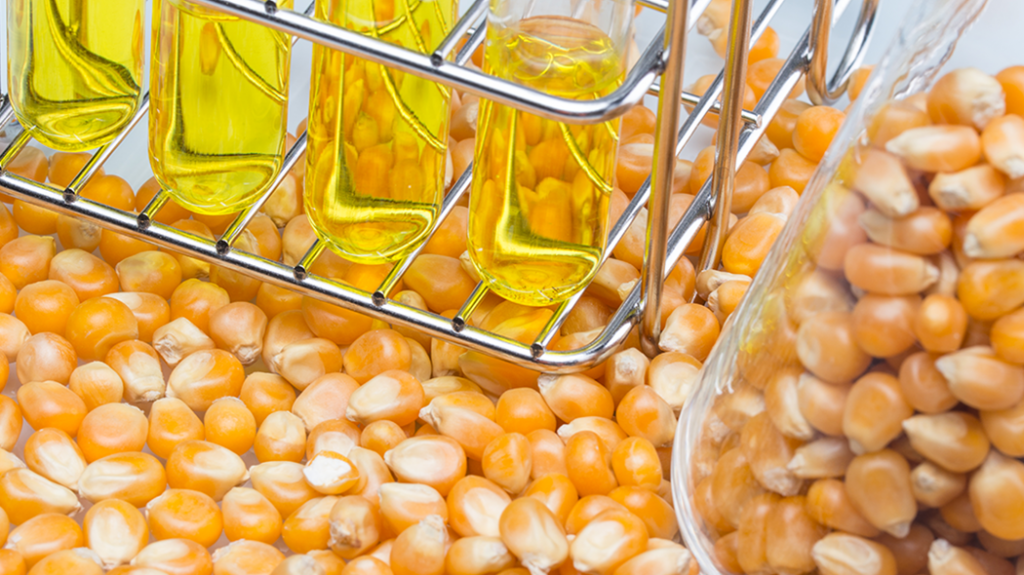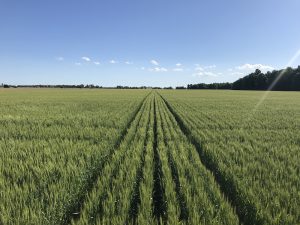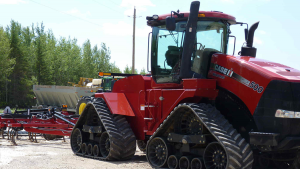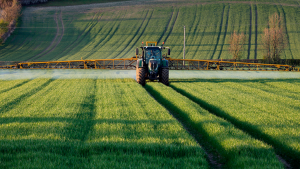Turning the friendly skies green
THE FUTURE OF BIOFUEL IN AVIATION

IF HIGH-PERFORMANCE Indy cars can run on soy-based fuels, why can’t jet planes?
| WHAT YOU NEED TO KNOW • Sustainable aviation fuel (SAF) is made from non-petroleum, renewable feedstocks including corn and soybeans. • The first commercial airline flight using SAF took off from Chicago in December 2021. • Aviation accounts for 9-12 per cent of transportation-based greenhouse gas emissions in the U.S. • Future use of the fuel could drastically reduce the carbon footprint of the aviation industry. • Use of SAF is instrumental to helping United Airlines achieve its goal of being 100 per cent green by 2050. |
Well, it turns out they can. And as 2021 came to a close, United Airlines proved it, shining yet another bright light on biofuel’s promising horizon.
On December 1, from Chicago, United operated what it described as “an unprecedented flight that will serve as a turning point in the industry’s effort to combat climate change,” by flying a new Boeing 737 MAX 8 aircraft full of passengers — including United’s CEO Scott Kirby and a host of other aviation business leaders and government officials — burning 100 per cent sustainable aviation fuel (SAF) in one of its two engines.
SAF is an alternative fuel made with non-petroleum, renewable feedstocks including corn, oilseeds such as soy, and dedicated energy crops.
MAKING HISTORY
The flight, which United called a first in aviation history, took place between Chicago’s O’Hare International Airport and Washington, D.C.’s Reagan National Airport. The Max 8 aircraft used 500 gallons of what United called “drop-in ready” SAF in one engine and the same amount of conventional jet fuel in the other engine, to further prove there are no operational differences between the two.
For an industry so fuel dependent, plagued by flight shaming — that is, an effort by environmentalists to instill guilt in air travellers about aviation greenhouse gases (GHG) — the flight was practical, promising, and symbolic.
First, according to United, it set the stage for more scalable uses of SAF by all airlines in the future.
As well, SAF has the potential to deliver the performance of petroleum-based jet fuel…but with a fraction of its carbon footprint.
And that’s what the U.S. government, in its zeal to have the U.S. be seen as a global environmental leader, wants from sectors like aviation. The U.S. Environmental Protection Agency says aviation GHG emissions make up 9-12 per cent of U.S. transportation GHG emissions.
AGRICULTURE’S ROLE
Agriculture is seen as having a huge role in aviation GHG mitigation. The U.S. Department of Energy says the country’s feedstock resources could meet the projected fuel demand of the entire U.S. aviation industry. The department estimates a whopping one billion dry tonnes of biomass can be collected sustainably each year in the United States, enough to produce 50–60 billion gallons of low-carbon biofuels.
SAF made from renewable biomass and waste resources have the potential to deliver the performance of petroleum-based jet fuel but with a fraction of its carbon footprint, giving airlines solid footing for decoupling green GHG emissions from flight. It says some emerging SAF pathways even have a net-negative GHG footprint.
So it’s working with the U.S. Department of Transportation, the U.S. Department of Agriculture, and other federal government agencies to develop a comprehensive strategy for scaling up new technologies to produce SAF on a commercial scale. Farmers are clearly a part of the U.S. plan.
“By growing biomass crops for SAF production, American farmers can earn more money during off seasons by providing feedstocks to this new market, while also securing benefits for their farms like reducing nutrient losses and improving soil quality,” says the energy department.
Further, it acknowledges that biomass crops can control erosion and improve water quality and quantity. They can also increase biodiversity and store carbon in the soil, which can deliver on-farm benefits and environmental benefits across the country, it says.
And finally, it says producing SAF from wet wastes, like manure and sewage sludge, reduces pollution pressure on watersheds, while also keeping potent methane gas—a key contributor to climate change—out of the atmosphere.
The flight drew criticism from some quarters. For example, The Guardian newspaper noted that SAF has been a dream of the aviation sector for more a decade, yet it still only makes up less than 0.1 per cent of aviation fuel and costs about three to four times more than conventional fuel.
However, timing is everything, and the aggressive U.S. environmental agenda stands to accelerate SAF development significantly. So does public sentiment: A tweet from United Dec. 1 about the flight garnered 2,600 likes.
“This is an unfolding and very dynamic market disruption,” said Mac Marshall, vice president of market intelligence for the U.S. Soybean Export Council, in the United Soybean Board’s Soy Hopper newsletter. “I think it is a positive disruption. The real excitement is when you start to see the investments come in with announcements from corporate and end-users.”
INVESTMENT IN BIOFUEL DEVELOPMENT
Excitement grew further in January when Microsoft announced it was investing $50 million in a sustainable jet fuel biorefinery development in Georgia. The investment will come from the company’s Climate Innovation Fund, which has committed $1 billion over four years to speed up carbon removal technology.
All this makes aviation CEOs like United Airlines’ Kirby optimistic. His company’s goal is to be 100 per cent green by 2050, by totally reducing its GHG emissions by 2050 without relying on traditional carbon offsets. That means more opportunities for feedstock producers, like farmers.
“Today’s SAF flight is not only a significant milestone for efforts to decarbonize our industry,” he said, “but when combined with the surge in commitments to produce and purchase alternative fuels, we’re demonstrating the scalable and impactful way companies can join together and play a role in addressing the biggest challenge of our lifetimes.” •





















